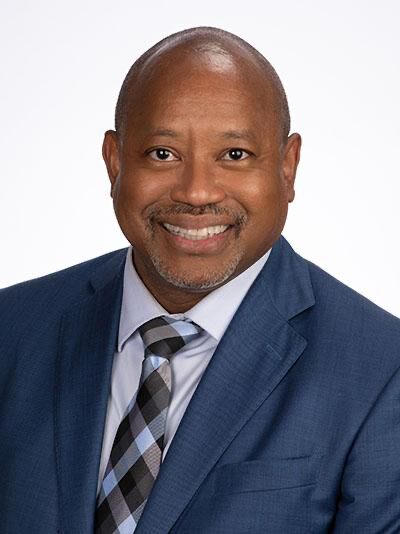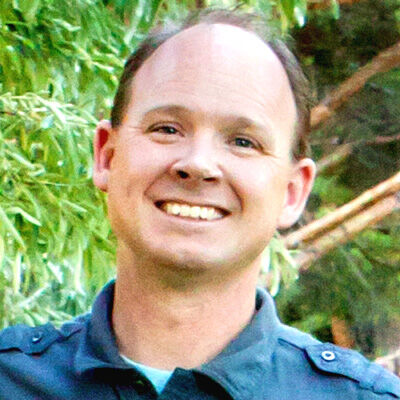
New COVID-19 positive cases show the omicron variant wave may have finally crested statewide and locally.
Both the Florida Department of Health (FDOH) and Gainesville’s hospitals are seeing a slowdown. On Monday, UF Health Shands Hospital and North Florida Regional Medical Center had a combined 281 COVID-positive hospitalizations, down from 306 last week.
Shands Hospital reported 151 COVID-positive patients with 50 in either the Intensive Care Unit (ICU) or Intermediate Care Unit (IMC), including 13 pediatrics cases and four in the ICU. UF Shands is also treating 63 patients who started COVID positive but are no longer infectious.
On Jan. 24, Shands had 181 COVID-positive patients with 58 in the ICU/IMC, along with eight pediatric patients, up from 143 total cases on Jan. 13.
“From a societal perspective, we should all be excited that my infectious number—my 151—is coming down,” said UF Shands Health CEO Ed Jimenez, adding that about 73 percent of the COVID-positive patients are unvaccinated.

At North Florida Regional Medical Center, Monday’s COVID-positive patient cases were at 130 with 14 in ICU. Last Monday, North Florida Regional tallied 125 cases, up from 75 on Jan. 13.
FDOH’s weekly report on Friday showed a statewide decline occurring. The state logged 198,719 new cases last week, down from the previous week’s 288,793 and a high of 430,015 reported on Jan. 7.
“We are encouraged by statewide trends that indicate COVID-19 hospitalizations and overall case positivity are on the decline,” said Dr. Sean Benoit, North Florida Regional’s CMO, in a statement emailed to Mainstreet Daily News. “We anticipate we will reach our Omicron-related COVID infections peak in our community soon, which will reduce our COVID-19-related admissions at our facility.”
In Alachua County, COVD-positive cases have dropped steadily over the past two weeks from a record high of 6,524 on Jan. 13 to Friday’s number of 3,596.
Statewide, 73 percent of the population ages 5 and up are now vaccinated with 92 percent of the 65-plus age group. The 5- to 11-year-old range remains the lowest at 20 percent, but most of them were not approved to receive the vaccine until early November. Most children didn’t receive their first dose until late November or early December and their second dose until late December or early January.
“The COVID-19 vaccine is one of the most effective tools we have to stop the spread of the virus and encourage those who are eligible to get the COVID-19 vaccine and booster shot,” Benoit said.
Jimenez added that, with the recent omicron surge, many people remain unvaccinated.
“I’m a little sad we can’t get the (vaccination) numbers up,” he said. “We’ll keep encouraging the message that we believe that vaccination is important.”
According to the FDOH report, the current vaccination percentages for area counties are:
- Alachua County – 69 percent
- Union County – 54 percent
- Levy County – 53 percent
- Bradford County – 48 percent
- Columbia County – 47 percent
- Gilchrist County – 43 percent
- Dixie County – 41 percent
- Suwannee County – 40 percent

Alachua County Public School’s COVID dashboard reported a drop in new COVID-positive cases from 702 students the week of Jan. 16 to 350 the week of Jan. 23. And staff counts have gone from 113 to 50 in the same time period.
Area vaccine sites and testing sites are available online
With the COVID-19 pandemic entering its second year, both Jimenez and Benoit continue to praise the ongoing front-line workers who battle to save lives daily.
“I would like to express my appreciation to our team of dedicated caregivers who have been providing the highest level of compassionate care to our patients since the pandemic started nearly two years ago,” Benoit said. “Their unwavering call to care is an inspiration to many.”
Jimenez addressed the physical and emotional fatigue his staff has undergone since the pandemic started.
“As our society saw the (variant) waves, I have hundreds of staff that haven’t been able to turn it off,” he said. “They’ve been taking care of people the whole time. So they never got to experience the wave.
“So there’s the physical fatigue and then there’s the emotional fatigue. If you work in our ICU, for nearly two years now you’ve seen death almost on a daily basis. I don’t know how emotionally people have such strong will—and they do because I love our staff and they’re amazing at it—but think about two years every day doing your best to save someone and it not working out.”
Suggested Articles
No related articles found.



